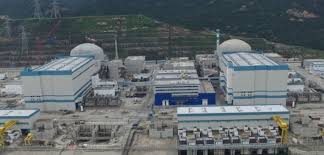
Breaking News
 New Drone Rules Will Pave the Way for Starbucks and Amazon Deliveries
New Drone Rules Will Pave the Way for Starbucks and Amazon Deliveries
 Grand Theft World Podcast 247 | LICENSE TO GENOCIDE with guest Scott Horton
Grand Theft World Podcast 247 | LICENSE TO GENOCIDE with guest Scott Horton
 The Collapse of Britain's National Health Service
The Collapse of Britain's National Health Service
 BREAKING: CONGRESS MOVES TO NULLIFY BIDEN'S PROTECTION OF FAUCI, MILLEY, SCHIFF...
BREAKING: CONGRESS MOVES TO NULLIFY BIDEN'S PROTECTION OF FAUCI, MILLEY, SCHIFF...
Top Tech News
 Chinese Scientists Produce 'Impossible' Steel to Line Nuclear Fusion Reactors in Major Break
Chinese Scientists Produce 'Impossible' Steel to Line Nuclear Fusion Reactors in Major Break
 1,000 miles: EV range world record demolished ... by a pickup truck
1,000 miles: EV range world record demolished ... by a pickup truck
 Fermented Stevia Extract Kills Pancreatic Cancer Cells In Lab Tests
Fermented Stevia Extract Kills Pancreatic Cancer Cells In Lab Tests
 3D printing set to slash nuclear plant build times & costs
3D printing set to slash nuclear plant build times & costs
 You can design the wheels for NASA's next moon vehicle with the 'Rock and Roll Challenge
You can design the wheels for NASA's next moon vehicle with the 'Rock and Roll Challenge
 'Robot skin' beats human reflexes, transforms grip with fabric-powered touch
'Robot skin' beats human reflexes, transforms grip with fabric-powered touch
 World's first nuclear fusion plant being built in US to power Microsoft data centers
World's first nuclear fusion plant being built in US to power Microsoft data centers
 The mitochondria are more than just the "powerhouse of the cell" – they initiate immune...
The mitochondria are more than just the "powerhouse of the cell" – they initiate immune...
 Historic Aviation Engine Advance to Unlock Hypersonic Mach 10 Planes
Historic Aviation Engine Advance to Unlock Hypersonic Mach 10 Planes
 OpenAI CEO Sam Altman Pitches Eyeball-Scanning World ID to Bankers
OpenAI CEO Sam Altman Pitches Eyeball-Scanning World ID to Bankers
China Starts Operating Most Powerful Single Nuclear Reactor

The main design objectives of the third generation EPR design are increased safety while providing enhanced economic competitiveness through improvements to previous PWR designs scaled up to an electrical power output of around 1650 MW (net) with thermal power 4500 MW. The reactor can use 5% enriched uranium oxide fuel, reprocessed uranium fuel or 100% mixed uranium plutonium oxide fuel. The EPR was designed to use uranium more efficiently than older Generation II reactors, using approximately 17% less uranium per unit of electricity generated than these older reactor technologies.
The first two EPR units to start construction, at Olkiluoto in Finland and Flamanville in France, are both facing costly delays (to at least 2020). Construction commenced on two Chinese units at Taishan in 2009 and 2010. Taishan 2 is expected to begin operation in 2019. Two units at Hinkley Point in the United Kingdom received final approval in September 2016 and are expected to be completed by 2025.
There are new EPR redesigns which will allow for simpler and faster construction.



